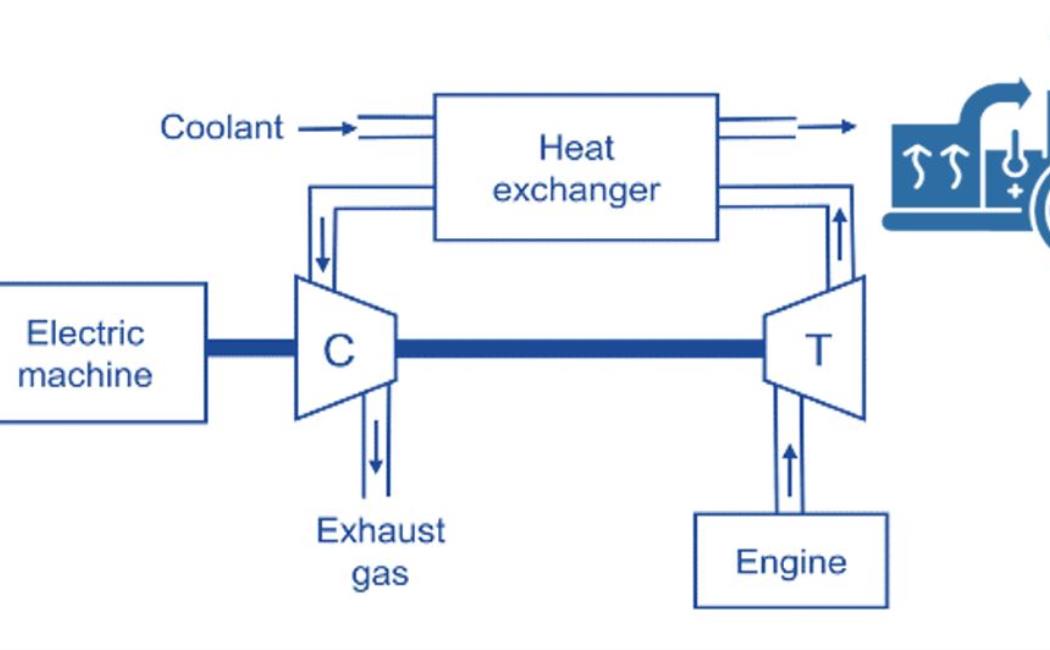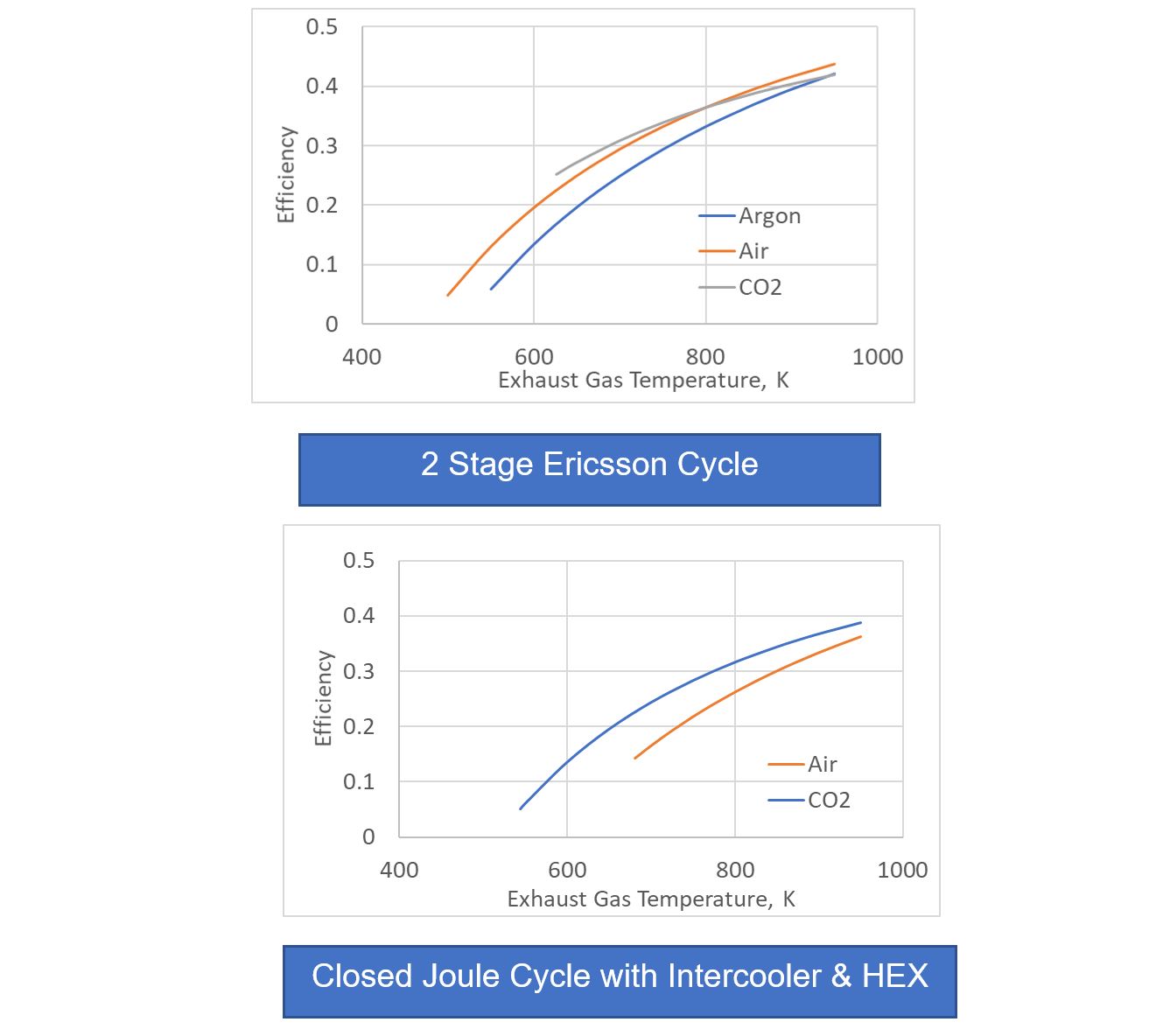
Prof. J.W.G. Turner, Dr. S. Gubba
Objective
Due to the impact of greenhouse gases on our environment, decarbonization for a net-zero future has gained momentum in recent years. Various governments and industries have announced their strategies to achieve low-carbon or net-zero strategies, which will require the use of renewable energy resources and alternative fuels. Achieving a net-zero carbon future may take anywhere between 20-50 years. In the interim, it is apparent that there is a need to make the current energy-producing devices such as IC engines and gas turbines more efficient, helping to bridge the gap. One such concept is waste heat recovery (WHR) from hot exhaust gases from marine IC engines.
Use of a closed Joule cycle with a heat source, such as the exhaust gas stream from a marine engine would be able to achieve very good heat recovery, thereby improving overall cycle efficiency. Therefore, the objective of this work is to study and compare options based on the Joule cycle for waste heat recovery from a marine engine. These options will be either a direct inverted Joule cycle in which the exhaust gas itself is used as the working fluid, or in a closed Joule or Ericsson cycle. In the latter closed cases, another key objective is choosing the best working fluid that gives optimum recovery. Appropriate sizing of each component of the cycle is another significant task, where system-level modelling can help prior to experiments. Sensitivity studies will be carried out to better understand the heat exchanger(s) and turbomachinery requirements, as well as their effects on system efficiency.
Methodology
Different variants of WHR cycles suitable for marine applications will be analysed using Excel and Aspen Plus. From simple to complex, the cycles considered to be analysed include the Inverted Joule Cycle, Closed Joule Cycle (CJC), CJC with heat recuperation, and a two-stage CJC cycle as an approximation to the Ericsson Cycle, the CJC with two stages of expansion, reheating and heat recuperation, and two stages of compression, intercooler and heat recuperation.
Air, argon, and carbon dioxide will be investigated as the working fluids in the closed cycles. Sensitivity studies of the exhaust gas temperature and the pressure ratio and their impact on the efficiency will be carried out for the considered working fluids and a comparative analysis of the different system models will also be performed.
The developed models will be refined with individual component efficiency maps so, the true efficiency gain can be estimated. This step will enable the selection of the most efficient cycle to be tested experimentally. Experimental validation of the developed cycle or parts of the cycle will be attempted to prove the viability of WHR for marine applications.
Expected outcome
The work will determine a suitable cycle for the WHR process when applied to marine engines. Our initial calculations show that for an exhaust gas temperature of 600oC, theoretical system efficiencies up to about 40% can be obtained with a complex cycle.

Figures: Effect of exhaust gas temperature at an overall pressure ratio of 4 for two closed cycles